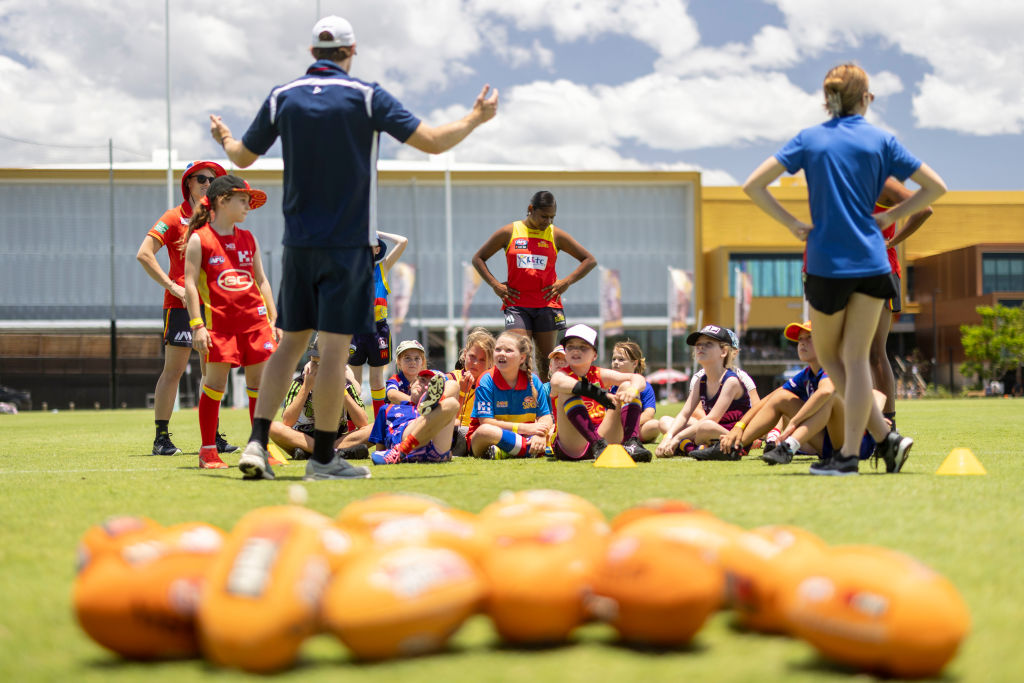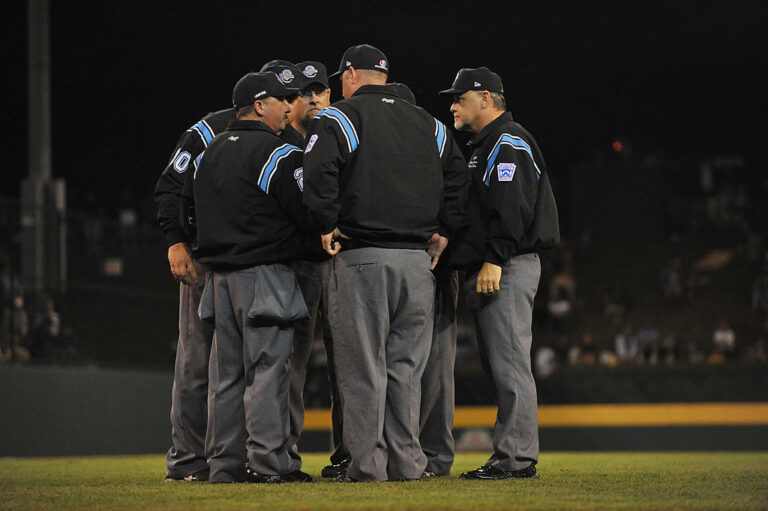COVID Has Spurred a Youth Mental Health Crisis. Here's How Coaches Can Help
Why this matters
Youth sport coaches are often parents of the kids on the team, or they volunteer or are paid low wages to coach the team. That doesn't mean they can't become part of the support system that is vital for youth athletes.
Note: This story includes discussion of stress, anxiety, loneliness and thoughts of suicide among young people and youth athletes.
“Why don’t you just leave practice since you’re not going to listen?” I told the player on my seventh- and eighth-grade rec soccer team, exasperated by his constant disobedience.
“Why don’t you just stop coaching?” the player replied.
This was our last conversation. It came late in the year of a winless regular season – my first season as a coach since the start of the pandemic. The player left practice and quit the team, providing a huge relief for me, two other coaches, and most of our players and parents. His behavior had cast a shadow and negatively influenced other teammates throughout the season.
In addition to relief, however, I also felt profound sadness.
In five years of coaching soccer, I always prided myself as someone who could – if not connect with every child – at least keep the difficult ones from hurting the team culture. I had tried a little to get to know this particular child and his parents. I failed, miserably. Whenever there was slight progress, he reverted back to disobedience – doing his own thing at practice, demanding to play certain positions, disrespecting coaches, and disparaging a teammate on a text message chain.
What he really seemed to need was structure, and we waited too long as coaches to provide him with it. I later learned, not surprisingly, this player was also struggling socially at school.
He wasn’t the only one.
After two years away from coaching, I could not believe how much the kids had changed. Two players quit early in the season. Many sniped at each other throughout games and practices. Some kids had very little confidence in themselves and had to be built up. Others had inflated egos and needed reality checks.
Granted, I was now for the first time coaching teenagers – an age that brings different social behaviors. But something else was happening. The kids simply didn’t know how to socialize after a year-plus of COVID-19 shutdowns. Nor could they handle whatever emotional struggles were brewing inside them. By the way they behaved, some of these kids were crying out for help.
I didn’t do a good enough job to help them. I felt totally unprepared to work with my players in a way that I had never before felt as a coach.
America’s youth are experiencing a collective mental health crisis, with more than four in 10 saying they feel persistently sad or hopeless, according to a new CDC study of high school students. And that’s just the headline. Other numbers in the same study are equally staggering:
- More than one-third of high school students reported they experienced poor mental health. Sadness among White teens rose faster than among other groups.
- More than one in four girls seriously considered attempting suicide during the pandemic – twice the rate of boys. Nearly half of LGBTQ teens said they contemplated suicide vs. 14 percent of their heterosexual peers.
- More than half of all students reported emotional abuse by a parent or another adult in the home, including swearing at, insulting, or putting down the student.
- And 11 percent experienced physical abuse in their home.
“We are just at the beginning of a secondary mental health pandemic,” said Rebekah Roulier, chief operating officer of Doc Wayne Youth Services, a sport-based group therapy program based in Boston. “The implications of social isolation and the stress upon us all will continue for years.”
As my torturous soccer season dragged on – and in the months since – I have wanted to better understand how coaches can practically help with their young athletes’ mental health. No, coaches won’t all become trained psychologists. But as people who in some cases interact with children more than any other adult in their lives, we can become something like first responders, able to recognize and triage mental health red flags.
That’s my hope, anyway. And many mental health experts associated with youth sports agree – provided we always keep in mind that untrained, low-paid, or volunteer coaches can do only so much.
If you believe it takes a village to raise a child, as I do, now is the time to better use coaches to help our children. Here are some ways to get started.
Changing Youth Sports Culture
Dr. Kevin Chapman, founder and director of the Kentucky Center for Anxiety and Related Disorders, has extensive experience with athletes at all levels, from youth sports to professionals and Olympians. Even before the pandemic, he said, our children were struggling with mental health. COVID-19 simply exacerbated the problem.
“If we continue to sweep things under the rug and do what I call ‘damage control,’ I think we’ll see an escalation of mental health symptoms and clinical disorders in kids we probably could have helped,” Chapman said at the Aspen Institute’s 2021 Project Play Summit. “What I hope for is more of a preventive approach. If we can capture youth and their families, coaches, and sports organizations early and infuse in them that mental skills, self-talk, and the idea that it’s OK to not be OK, then that becomes a more automatic process of youth sports.”
In other words, we need to change a youth sports culture that currently doesn’t facilitate conversations around mental health. Chapman estimates 10 percent to 15 percent of all youth sports coaches are adequately trained in mental health skills.
“Boys are taught hyper masculinity and don’t express emotions,” he said. “It’s been suppressed. I don’t think we’ve done an adequate job of equipping coaches to handle these conversations. There has to be a safe environment for young athletes to vocalize they’re struggling with nerves. Nerves have a physical connotation when, in reality, it’s anxiety.”
Related: My COVID-19 Year as a Youth Sports Parent and Why I Fear What’s Next
Children often don’t know how to put that anxiety into words. And it gets exacerbated if a coach misinterprets why bad behavior or mistakes are happening and simply yells at the player to do better.
“Mental health deals with understanding who you really are, and a 12-year-old may not really know that,” said Tyrre Burks, founder of Players Health, which provides an athlete safety and insurance platform for sports organizations. “Whatever story they’re telling themselves about striking out or not catching the ball, it’s not a reflection of who they are. If I’m yelling at them or ignoring them at practice, what do they say about themselves?
“Of course, there’s going to be a mental aspect to that. The child thinks, ‘I look up to Coach, and he’s disappointed in me.’ Then they make up a ton of stories that they can only feel good about themselves based on whether they produce. That’s a very scary place for kids to be. That’s where we’re going with youth sports: I have to provide to feel like I’m worth a damn.”
Burks, whose parents died when he was young, took his anger to the football field and ultimately played in college. He was never taught in football to understand where his violent feelings came from. “I could kill someone with that anger,” he said.
Today, Burks mentors many teens and coaches his 16-year-old son’s basketball team. Every week for one hour, he sets up check-ins for players and coaches to talk about how they feel – a trusted space for back-and-forth, open communication:
What are you feeling now? If you’re feeling mad, what does feeling mad mean? Why are you feeling angry?
Burks holds these sessions in small groups of five to build trust and confidentiality. The goal isn’t to judge or solve problems; it’s figuring out what’s happening underneath.
“A lot of it comes down to fear and helping athletes really understand where fear comes from,” Burks said. “It’s a support system for athletes, and it’s game-changing. I chime in, too: ‘This week, I felt hurt, angry, or sad, but I’m excited and confident.’
“Then a kid goes, ‘Hey, Coach, what’s underneath?’ Me leaning into my feelings makes guys go, ‘Man, Coach is doing this. I can really dig into what’s going on with me.’ Think of what the world looks like when males start to engage with what they’re feeling and why.”
Keep It Simple to Train Coaches
We know social connections significantly help youth. In the latest mental health study from the U.S. Center for Disease Control and Prevention, youth who felt connected to adults and peers at school were significantly less likely than those who did not to report persistent feelings of sadness or hopelessness (35 percent vs. 53 percent). Youth who felt connected at school were twice less likely to have attempted suicide.
However, fewer than half (47 percent) of youth reported feeling close to people at school during the pandemic. What if coaches could help better close that gap? What can we practically ask coaches to do?
Doc Wayne Youth Services, which provides sport-based group therapy interventions for at-risk youth, offers a window into what’s possible. Using a curriculum that incorporates social-emotional learning and life skills, the nonprofit offers mental health programming reimagined through the lens of sport.
Clinicians and mentors are known as coaches. Their offices are local gyms, fields, or other comparable safe places.
One of Doc Wayne’s goals is to professionalize sport-based youth therapy by creating a skilled workforce to address mental health. The rationale around sport-based therapy is it’s a viable option for youth who may not progress in traditional talk therapy.
During the brunt of the pandemic in 2020, Doc Wayne’s direct services for individual therapy increased 700 percent. Preexisting mental health challenges, social justice movements, and COVID-19 shutdowns all contributed to the underlying reasons for this increase.
“If you asked me two years ago what’s a good solution for youth sports organizations, I’d say they need to know how to make referrals to trained professionals,” said Roulier, Doc Wayne’s chief operating officer. “The problem now is there’s no one to refer to. The wait lists are so long for providers. It may be six months before a child gets seen. I think we really need to equip the coaches with some basic skills so they’re able to manage situations until a professional can be made available.”
Roulier suggests focusing training on how to talk to kids, which she believes is even more important than identifying mental health symptoms. Coaches can learn how to practice reflective listening, how to hold space for kids to talk, and then how to process the information and determine what to do if they hear certain comments.
Roulier believes coaches need to understand what basic validation looks like and how to react if an athlete comes to them with mental health concerns. The body language of the coach can be critical.
“You don’t want an over-the-top reaction, but just acceptance,” she said. “A lot of coaches are very action-oriented. They think you presented a concern, and I’ll tell you A, B, C, and D. Kids don’t always need that. You just need to validate the person’s emotion on the other side, and that creates a more open environment for future conversations.”
Words Matter
Former National Basketball Association star Jeremy Lin shared powerful stories at the 2021 Project Play Summit about the racial biases he faced in sports as a child – and how that negatively impacted his mental health for years.
Lin also said children are so impressionable that they don’t understand how to apply the truth behind sayings commonly used in our sports culture, such as “man up,” “suck it up,” “tough it out,” “never show weakness,” and “just fight through it.”
“What does ‘man up’ even mean?” he asked. “To me, actually if I was to ‘man up’ and try to be strong, really what that means is to admit that I’m weak when I feel weak and to ask for help when I need help. Because when I try to ‘man up' and I don’t ask for help and then I fail, I fail miserably, and then I fail over and over again.”
Related: How Youth Hockey Is Curbing Racism
The good news, experts say, is that some children – especially at high school ages – are becoming more comfortable with speaking openly about mental health because of their pandemic experiences. The question is, who can they talk with? Professional and college sports teams often make doctors and other mental health resources available to athletes. That’s far less likely for financially strapped high schools and youth sports organizations. And at those levels, athlete issues are often minimized. It’s easy for problems to be seen as mere teenage angst or something that children will grow out of eventually.
“Few high school teams, and even fewer younger sports teams, have the resources to employ a psychologist,” said Dr. Elizabeth Pieroth, a neuropsychologist who has written about mental health issues in youth athletes. “School counselors are overwhelmed, so a coach may double as an untrained mental health professional. I always feel bad about putting another thing on coaches. We ask them to learn about concussion and sudden cardiac arrest and be mentors, when most are just volunteers. We need to make it easier.”
Several experts I spoke with recommend giving coaches simple scripts for language to use in certain troubling situations. If a child says X that draws a red flag, then the coach can use Y in his or her response.
“That doesn’t teach coaches to be mental health providers, but it creates a situation where kids feel comfortable,” Pieroth said. “We’re not going to suddenly create more social workers and therapists for kids. We really should be focusing on creating videos and resources that talk about mental health from the perspective of an adolescent athlete. The data tell us that kids are much more open to a pro athlete saying something than a parent or professional.”
Words matter, especially from coaches. Chapman, the doctor from the Kentucky Center for Anxiety and Related Disorders, believes too many coaches try to motivate athletes through punishing statements such as “Stop turning the ball over.” Instead, he recommends saying something like “Have better ball control.”
“What coaches don’t realize is when they make such a powerful statement, athletes internalize that and many struggle by equating their performance with their identity, and therefore you’ve created a bigger problem, especially if that’s being reinforced at home,” Chapman said. “It’s a much bigger issue than it sounds at face value. That’s a seed that gets watered and ultimately causes a lot of athletes to struggle with more clinical severity with their symptoms.”
Chapman thinks coaches and parents also need to be trained about symptoms of mental health. The young athlete who’s complaining about body aches and stomach pain may be having a panic attack and can’t put into words how he or she feels. Coaches can help children deal with those feelings in a positive and useful way, especially when parents are on board.
If Not Now, Then When?
I didn’t really dive into mental health with the disobedient player on my soccer team. I wish I had. Our kids need help – and many are looking to sports to provide it. About half of high school students say they are motivated to play sports to help their emotional well-being and mental health, according to a national survey by the Aspen Institute and Resonant Education. Girls (56 percent) are more likely to play sports for their mental health than boys (41 percent).
As coaches, we have an important role to play. We just need to realize it and make mental health skills a priority. That means providing coaches with the tools they need. And it means coaches accepting that times have changed.
“Many coaches are going to cling to previously held beliefs despite overwhelming evidence to the contrary,” Chapman said. “On the other hand, we have low-hanging fruit in our country. We have all these high-profile athletes with really large platforms who are speaking out now about mental health. It’s one of those things where if you don’t see the value now, when are you going to see it?”
Jon Solomon is editorial director of the Aspen Institute Sports & Society Program, whose main initiative is Project Play. Learn more about Project Play here.
Please see our list of Mental Health Resources if you are seeking information or assistance regarding mental health.
Monthly Issue
Mental Health: A New Priority in Sport
Athletes continue to tell us they are not OK with their actions and words. In response, the sports industry has acknowledged it can and should be doing more to support the people who are its lifeblood, from athletes to coaches and beyond.
Sport is both reckoning with its roots, uncovering how history and habit created circumstances that don’t suit everyone who competes, as well as navigating new territory during a time of unprecedented strain on our mental well-being. By making mental health a priority, sport has an opportunity to confer a host of benefits supporting mental wellness and to be more safe, inclusive, and inspiring.




